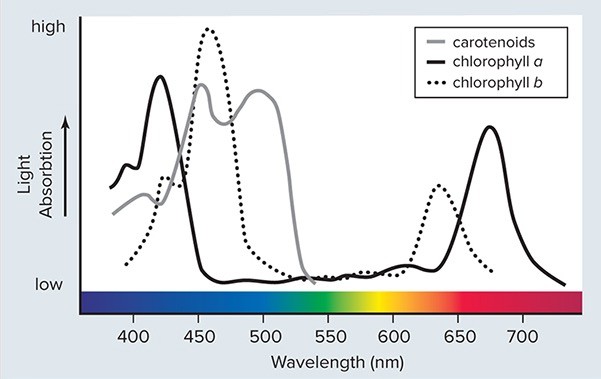Stems that grow underground and produce roots and new shoots are
A. rhizomes.
B. always parasitic.
C. stomata.
D. tubers.
E. tendrils.
Ans: A. rhizomes.
You might also like to view...
A confused frog deposits its sperm onto a toad's eggs as they are being laid. No offspring develop because the frog's sperm are unable to penetrate the toad's egg. This is an example of
A. mechanical isolation. B. temporal isolation. C. habitat isolation. D. behavioral isolation. E. gametic isolation.
Resistance of sickle cell disease carriers to malaria illustrates
A) genetic drift. B) a population bottleneck. C) balanced polymorphism. D) a founder effect.
 Copyright© The Mc-Graw-Hill Companies,Inc, Permission Required for reproduction or display.Based on a variety of experiments, it is known that the rate of photosynthesis is highest when wavelengths of light between 400 and 500 nm are used, and when wavelengths around 700 nm are used. What does this indicate about the relative importance of chlorophyll a and b in photosynthesis?
Copyright© The Mc-Graw-Hill Companies,Inc, Permission Required for reproduction or display.Based on a variety of experiments, it is known that the rate of photosynthesis is highest when wavelengths of light between 400 and 500 nm are used, and when wavelengths around 700 nm are used. What does this indicate about the relative importance of chlorophyll a and b in photosynthesis?
A. Reflection of light by chlorophyll a and b is essential for the process of photosynthesis B. Absorption of light by chlorophyll a and b is essential for the process of photosynthesis C. Transmission of light by chlorophyll a and b is essential for the process of photosynthesis D. Chlorophyll a and b are much less important than other pigments in the reflection, absorption and transmission of light relevant to photosynthesis
This type of plant provides nearly all of the non-meat food for the human population.
A. angiosperms B. algae C. bryophytes D. gymnosperms